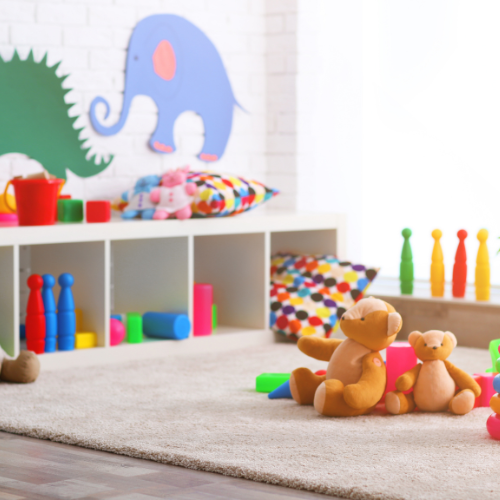
08 Feb Safe Pest Prevention in Kids’ Rooms
Florida Kids vs. Pests
As we navigate the unique challenges of living in South Florida, we understand the importance of maintaining a safe and comfortable environment for our children. With the warm climate and abundant wildlife, our homes can become targets for various pests seeking shelter and food.
In this comprehensive guide, we’ll explore effective strategies and preventive measures tailored specifically for South Florida families to ensure that your child’s room remains a sanctuary free from pesky invaders. Join us as we dive into practical tips and expert advice to help you protect your child’s space and provide them with the security and peace of mind they deserve.
As South Florida residents, we’re no strangers to the challenges posed by pests such as ants, mosquitoes, and cockroaches, which can not only be annoying but also carry health risks for our children.
By arming ourselves with knowledge and implementing proactive pest prevention measures, we can create a safe and healthy environment where our little ones can thrive. Together, let’s embark on this journey to safeguard our child’s room and ensure that it remains a haven of comfort and security for them to grow and play in.
Battling Pests in Kid Spaces
In South Florida’s warm and humid climate, various pests thrive, posing potential threats to our children’s health and safety. Ants, mosquitoes, cockroaches, and rodents are among the most prevalent invaders that may find their way into our homes, including our children’s rooms.
These pests not only cause annoyance but also carry health risks. Ants can contaminate food, mosquitoes can transmit diseases like Zika and Dengue fever, cockroaches can trigger allergies, and rodents can spread harmful bacteria.
To effectively protect our children from these pests, it’s crucial to understand their behaviors and habits. Ants, for example, are attracted to food sources and can quickly infiltrate a home in search of crumbs.
Mosquitoes breed in stagnant water and are most active during dawn and dusk. Cockroaches thrive in dark, damp environments and can enter homes through cracks and crevices. Rodents are notorious for seeking shelter and food indoors, often nesting in attics, basements, and wall voids.
Sweep Away Pests
Maintaining cleanliness and reducing clutter are fundamental steps in preventing pest infestations in children’s rooms. Regular vacuuming, sweeping, and mopping to eliminate food crumbs and debris can help deter ants and cockroaches.
Ensure that food is stored in airtight containers to prevent access by pests, and avoid leaving pet food out overnight. Decluttering areas where pests may hide, such as closets and under the bed, can make it easier to spot signs of infestation and address them promptly.
Using child-safe insect repellents can provide added protection against mosquitoes and other biting insects, especially during outdoor playtime. Opt for products containing natural ingredients like citronella or eucalyptus oil, which are safe for children.
Installing window screens and using bed nets can also help prevent mosquito bites while your child sleeps. Additionally, regularly emptying and cleaning out water containers, such as flower pots and birdbaths, can eliminate mosquito breeding sites around your home.
Non-Toxic Pest Solutions
When it comes to pest control in children’s rooms, safety is paramount. Fortunately, there are many non-toxic methods that can effectively deter pests without putting your child’s health at risk. Essential oils like peppermint, lavender, and tea tree oil can act as natural repellents for ants, cockroaches, and other insects.
Simply dilute a few drops of oil in water and spray around entry points and areas prone to infestation. Vinegar is another natural remedy that can help repel ants and eliminate odors that attract pests. Mix equal parts vinegar and water in a spray bottle and use it to clean surfaces and wipe down areas where pests may enter.
Sealing cracks and crevices in your home is another essential step in preventing pest entry. Use caulk or weather stripping to seal gaps around windows, doors, and pipes, as these are common entry points for pests like ants and cockroaches. Repairing torn window screens and replacing damaged door sweeps can also help keep pests out.
Additionally, maintaining a tidy yard by trimming bushes and trees away from your home’s exterior can reduce the likelihood of pests finding their way indoors. Regularly inspecting your home for signs of pests and addressing any issues promptly is key to preventing infestations and ensuring a pest-free environment for your child.
Conclusion
In conclusion, protecting your child’s room from pests requires proactive measures and a commitment to safety. By understanding the behaviors of common pests in South Florida and implementing safe pest prevention practices, you can create a healthy and comfortable environment for your little one to grow
and play in. Remember to maintain cleanliness, use child-safe repellents, and employ non-toxic pest control methods to keep pests at bay.
As parents and grandparents, it’s our responsibility to prioritize our children’s well-being, and that includes protecting them from pests. By following the tips outlined in this guide, you can ensure that your child’s room remains a safe and pest-free haven. Together, let’s create a home environment where our children can thrive and flourish without the worry of pesky invaders.


No Comments